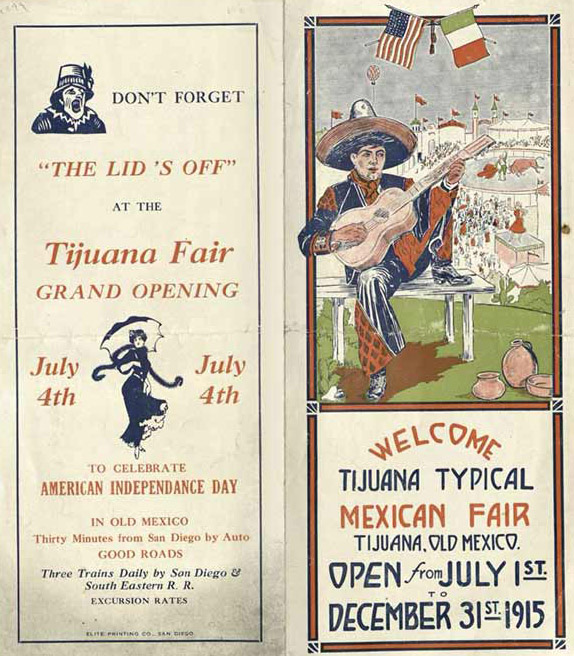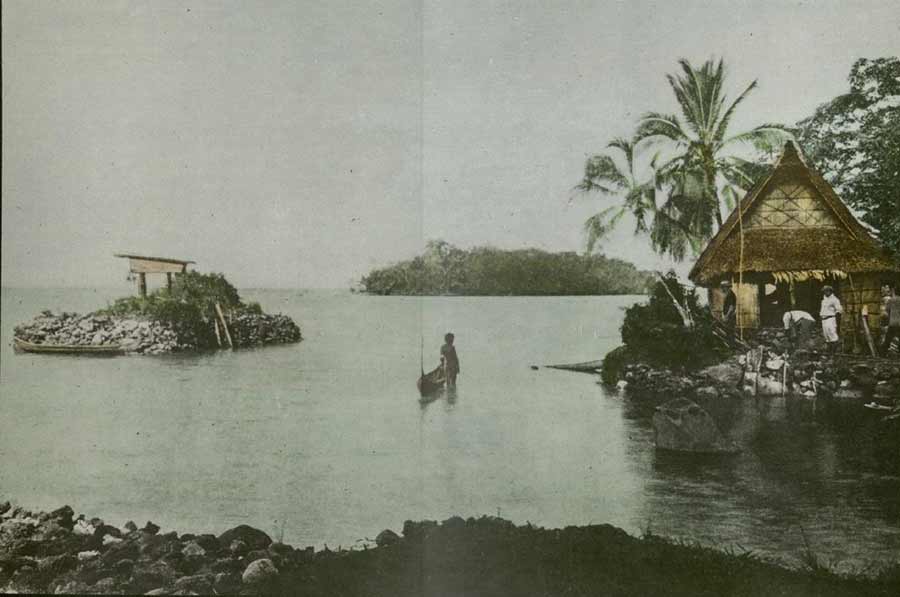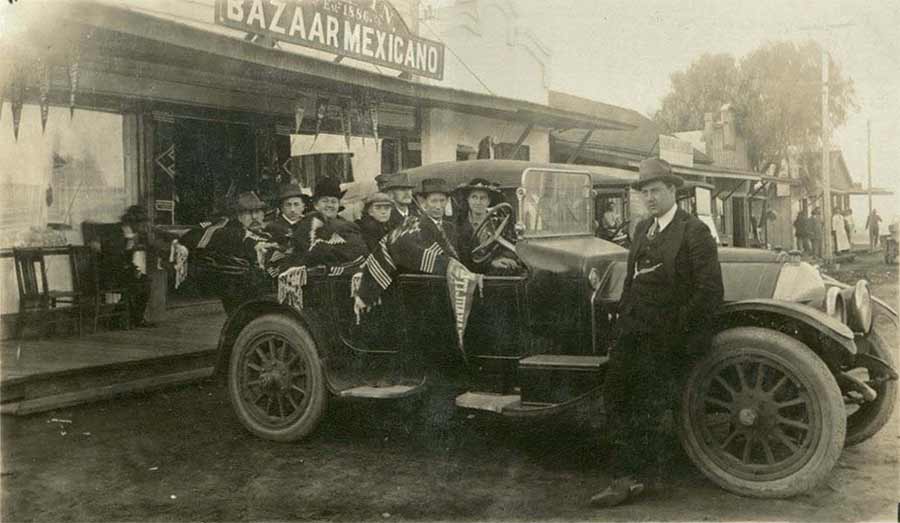By Anthony King
UC San Diego Arts and Humanities undergraduates explore Geisel Library archives, presenting exhibits on Tijuana tourism and South Pacific expeditions
Have you ever wanted to curate your own museum exhibit? Three students from the UC San Diego Division of Arts and Humanities got the chance to develop their own exhibitions, culled from material housed at the UC San Diego Library.
The students participated in the very first, two-quarter undergraduate curating course: independent study opportunities made available by the Institute of Arts and Humanities and the Library’s Special Collections & Archives. The curating project culminated in two exhibitions currently on display at Geisel Library, on the main floor leading to the Seuss Room.
“We are tremendously excited by our very first two exhibits because it not only provided a tactile practical experience for our undergraduate curators, but they have been able to teach the UC San Diego community something new and exciting about the past,” said Mark Hanna, a professor in the Department of History and associate director of the Institute of Arts and Humanities. “I enjoy watching students explore the exhibits each time I go to the library.”
Students spent Fall and Winter quarters with faculty mentors to shape their vision, working closely with Special Collections & Archives librarians on what materials were available and how they might be visually presented. They learned basic skills like searching the catalog and handling rare or fragile material properly, as well as how people traditionally interact with displays and exhibits.
“Special Collections & Archives was delighted to collaborate with the Institute of Arts and Humanities,” said Lynda Claassen, director of Special Collections & Archives. “It’s been a splendid opportunity to help enrich the undergraduate experience.”
‘Tijuana: The View from the North’

Curated by Department of Literature majors Jorge Arana and Rebecca Chhay, “Tijuana: The View from the North” explores the influence of United States legislation on the San Diego-Tijuana border region. Using photographs, postcards, travel brochures and magazines, the exhibit traces tourism in Tijuana from the Panama California Exposition in 1915 to Prohibition in the 1920s, and beyond.
“I was personally so fascinated by the Tijuana photograph postcard collection, many of which we feature in our exhibit,” Chhay said, explaining that the work was incredibly meaningful to them because it allowed them to gain valuable archival experience not often available to undergraduates.
“The majority of the postcards from the collection are souvenir photographs depicting U.S. tourists who crossed the border on day trips, and some even had been mailed with messages for friends and family written on the back,” she said. “The idea that something as simple as a postcard could someday end up in an archive made history feel more intimate for me — we are living and creating history, not just studying it.”
Working with Department of Literature professor Kathryn Walkiewicz, Chhay and Arana were encouraged to think about how best to engage potential viewers and convey their stories using the materials, Chhay said.
‘Preserving History in the Pursuit of Science’
Department of History student Carlisle Anne Boyle went to the J. Edward Hoffmeister Papers collection for her exhibit, “Preserving History in the Pursuit of Science: Geological Expeditions to the South Pacific.” Boyle used photographs, notebooks, personal letters and an official Western Union Telegram from 1926 to chronologically explore the famed geologist’s scientific research in Tonga and Fiji.
“While Hoffmeister made considerable contributions to the field of geology, his documentation of Tongan and Fijian populations and their cultures is even more remarkable,” Boyle explained in the exhibition text. “This exhibit explores the interaction between J. Edward Hoffmeister and local South Pacific populations, in addition to the impact of colonialism and westernization on the South Pacific.”

With the guidance of Department of History professor Claire Edington and Special Collections & Archives librarians, Boyle was even able to incorporate 1920s films of Hoffmeister on location. The films — presented to the King of Tonga in 1970 — are now digitized and on display in the exhibit.
Chhay said the students were thrilled with the chance to learn about archives and curating, and hope to see other undergraduates sign up for next year.
“I highly recommend students take advantage of this opportunity to gain archival experience, work closely with a faculty member and learn more about the world around them,” Chhay said. “I’m very much looking forward to seeing exhibits from future student curators.”
Applications for the next session are currently being accepted. Students are encouraged to visit the Library’s Special Collections & Archives to generate ideas for the project proposals. Open to undergraduates with majors or minors in the arts and humanities, students may apply individually or as teams.
“Our Special Collections & Archives is capacious enough to suggest hundreds of possible exhibits from poetry to visual art, so we hope to have a variety of applications this coming year after our pilot run,” Hanna said, inviting UC San Diego undergraduate students to participate in the 2018 – 2019 school year. Complete information and applications materials are available on the Institute of Arts and Humanities website.

